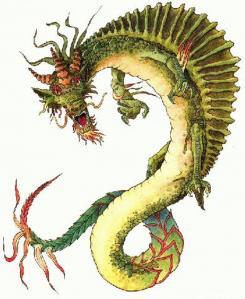 I’m just heading home after a very inspiring workshop organised by Fangliang He at Sun Yat-sen University in Guangzhou, China (I’m writing this from the Qantas Club in the Hong Kong airport).
I’m just heading home after a very inspiring workshop organised by Fangliang He at Sun Yat-sen University in Guangzhou, China (I’m writing this from the Qantas Club in the Hong Kong airport).
Before I proceed to regale you with the salient details of the ‘International Symposium for Biodiversity and Theoretical Ecology‘, I am compelled to state publicly that I offer my sincerest condolences to Fangliang and his family; unfortunately Fangliang’s brother passed away while we were at the workshop and so Fangliang wasn’t able to spend much time reaping the fruits of his organisational labour. If you know Fangliang, please send him a supporting email.
That sad note aside, I am delighted to say that the workshop was compelling, challenging and also rather fortuitous. I was one of many overseas invitees, and I must say that I was at times overwhelmed by the size of the brains they managed to pack into the auditorium. Many colleagues I didn’t know attended, and I hope that many will become collaborators. The international invitees were:
- Rob Colwell
- Sean Connolly
- Rampal Etienne
- Alan Hastings
- Subhash Lele
- Brian McGill
- Annette Ostling
- John Spence
- Doug Wu
- Weini Huang
But it wasn’t just a show of us lǎo wài (老外) – there was an abundance of excellent talks by many fine Chinese ecologists (professors, post-docs and students). I am constantly amazed how the Chinese just give it a go in English even though it is an incredible challenge to present good science in a foreign tongue.
So, on to the content. I won’t cover everything, but here are some highlights:
- Alan Hastings, whose work I’ve highlighted before here on ConservationBytes.com, presented some of his work on how regime shifts can arise from apparently simple, relative ‘stable’ dynamics
- Rampal Etienne presented his work on speciation-extinction models from which phylogenies can be simulated. He talked a lot about ‘diversity dependence’, which is something I’d like to model within the Cronus framework
- Sean Connolly talked about lognormal patterns approximate coral and coral fish distributions
- Rob Colwell showed how tropical species wax and wane in response to deep-time climate changes, and the processes underlying the patterns
- Brian McGill presented a new way to model species distributions, something he calls the Gause Liebig biogeographic law
- John Spence talked about the biggest forestry experiment in history – EMEND. Amazing stuff.
- Doug Wu gave a two-part talk in two languages (Mandarin & English) on the theory of symbiosis (he claims most interactions are mutualistic, not competitive) and on the revolution in molecular markers for biodiversity assessment
- Annette Ostling gave a great talk on demographic complexity and neutral theory
- Subhash Lele contests that with some independent information on species detection covariates, multiple surveys are not needed to estimate measurement error in biodiversity surveys
- Dingliang Xing from Sun Yat-sen University talked about how more closely related species are more spatially segregated in old-growth temperate forests
- Yuhua Zhang also from Sun Yat-sen showed some fantastic experiments on how species interactions affect the diversity-productivity relationship
- Yu Liu also from Sun Yat-sen presented some fascinating experiments regarding the Janzen-Connell hypothesis
With that much information loading, it is probably unnecessary to mention that my brain hurts. However, my main take-home message is that ecology (生态学 shēngtài xué) is not only alive and well in China, it is a rapidly growing field that is emphasising the understanding of biodiversity patterns, processes and implications. It’s great to see because well frankly, China needs some seriously good ecologists to counter the years of environmental abuse.
And it wasn’t all talk. At the end of the presentation each one of the invited speakers was matched to several students with the aim of focussing on improving their current projects and publications. My ‘assignments’ were Hong-Yu Niu of the South China Botanical Garden and Jiajia Liu of Lanzhou University. I am now working with both of them on the invasion history of coral berry and spatial aggregation patterns in Tibetan Plateau meadow vegetation, respectively.
Finally, it’s worth mentioning that one really great outcome of the meeting was the possibility of developing many new collaborations, both with my Chinese and non-Chinese colleagues. Thanks to everyone who participated, and especially to Fangliang and his crew for the wonderfully stimulating and hospitable environment provided. Gānbēi.
CJA Bradshaw

